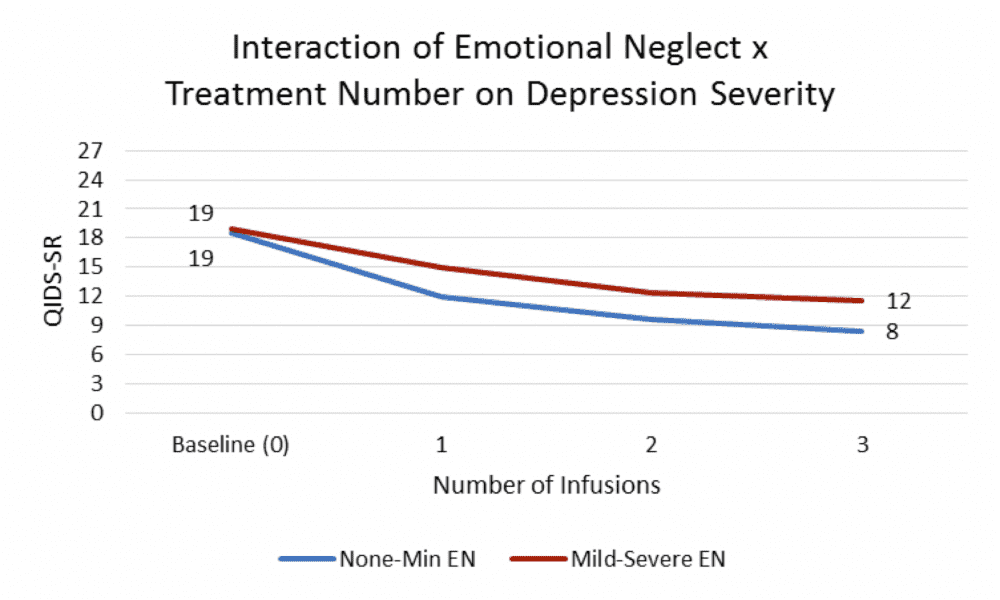Childhood trauma was long known to affect adult levels of depression and anxiety. But only recently has childhood trauma been definitively proven with scientific methods to leave long-lasting scars into adulthood. Childhood trauma makes any mental illness worse and makes any treatments less successful. Through our partnership with Baylor College of Medicine Psychiatry Department and their ongoing research, we were able to help add more information to this critical area of psychiatry study.
At Lone Star Infusion before the first infusion we ask patients to fill out a Childhood Trauma Quotient. This is a standardized quiz that has been verified and studied in the psychiatry world for assessing the amount of childhood trauma experienced. Childhood traumas are things like parental divorce, violence in the home, emotional neglect, and severe poverty. We anonymize the results and send them over to Baylor College of Medicine. Patients at Lone Star Infusion also fill out a Quick Inventory of Depressive Symptoms (QIDS) quiz before each infusion. The QIDS is a well-known and studied scoring system that is widely used in psychiatry. Although it is a very blunt tool and doesn’t entirely capture the patient experience, it is one of the best ways to objectively measure subjective mood changes. QIDS asks questions about the emotional state in the last 7 days, things like appetite, weight gain, sleep quality and suicidality are assessed. These QIDS scores are also anonymized and sent to Baylor for analysis. As patients progress through the series of ketamine infusions we expect to see a general decline of the QIDS scores which indicates a resolution of the severity of the depression symptoms. On average, 70% of our patients see a 50% reduction of their depression symptoms over the course of the first several infusions. At Lone Star Infusion you can always ask for your QIDS scores to help you keep track of your progress!
With our QIDS and Childhood Trauma Questionnaire data, our research partners at Baylor were able to recognize that, in general, patients with high levels of childhood trauma are more difficult to effectively treat. Those patients with high childhood trauma, and especially emotional neglect, consistently had greater levels of depression severity (high QIDS scores) throughout treatment.
However, the good news was that even though it is harder to see a result – those patients still responded strongly to ketamine infusions. They experienced a decrease of their symptoms and even better they had the same low remission rates as patients without childhood trauma. A further interesting finding was that the remission rates of patients with childhood trauma were actually improved with the ketamine infusions relative to similar patients using only typical antidepressants.
Please visit our resources page for the full article.
An Important Disclaimer: The information in this and other blog posts represents our informed opinion or the opinion of others, and does not constitute medical advice and should not be relied upon to make decisions regarding medical care. To address the specific details of your medical conditions and treatments please speak with your doctors.



